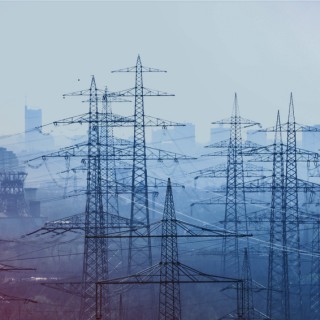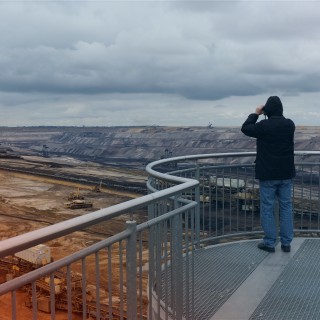Five energy projects that must happen in 2021
Insights
The future begins today, not tomorrow. The year 2020 was unusual in many ways, so many people will be relieved that it is now ending. But in terms of the energy transition, it was a watershed year. The European Union reached agreement on the European Green Deal. In Poland, the government and labour unions openly admitted that Poles need to talk about the end of the coal era. The energy sector in the country is at a crossroads and it is time for it to choose the right path for its further operation and development in 2021.

One thing is certain: the changes related to energy will accelerate. So, what can be expected over the next 12 months?
1. Big money for the energy transformation will drive investments in climate and energy
In the new EU financial perspective (budget), the funds allocated to Poland will amount to more than PLN 130 billion in grants alone. Some of this money will come from the Reconstruction and Resistance Fund and must be spent over the next three years, starting in 2021. These are new resources for combating the economic crisis caused by the COVID-19 pandemic. However, to use the money from the fund, it is necessary to have a reliable idea and give a guarantee that the implemented reforms will address the problems of the future. In addition, more than a third of this pool of funds should be allocated to solving environmental and climate problems, in line with EU objectives.
The most important priorities include the development of RES, energy efficiency, digitisation of the energy sector and clean heat (district heating and heating systems).
This is a huge opportunity for Poland. With great mobilisation and priority given to changes in the way buildings are heated, the country could solve the problem of winter smog in a few years.
2. Heating will become the dark horse of the power industry
For years, district heating has been treated as the younger sibling of the old power industry and has not aroused much interest. This will change for several reasons: coal-fired district heating plants built in the 1970s and 1980s have reached the end of their lifespan, and CO2 mitigation costs are beginning to eat up the rest of the revenue. The EU measures will motivate district heat providers to act. A new tariff system will be necessary, which will reward not only the production of heat but also the thermal comfort provided to residents. This is necessary to unlock the energy efficiency potential of buildings.
Finally, it is hoped that once a date for the end of coal use in urban households in 2030 has been included in the draft of Poland’s energy policy, the government will seriously address the regulations and mechanisms for financing this change.
3. Poland will decide its path for moving away from coal
The process of moving away from coal is accelerated by the collapse of the mining industry and the reluctance of companies to hold non-performing assets. Financial institutions are refusing to cooperate with them, and coal-fired power stations are generating losses. Most of them are old plants, which are less and less efficient, and it is clear that their support is coming to an end. After 2025, many of them will not receive subsidies from the capacity market. That is why energy companies are speaking out that they want to get rid of the shackles of coal.
It can be expected that the costs of maintaining coal-fired power stations, which from next year onwards will increase by nearly PLN 80 per MWh for industry due to the capacity mechanism, will be the subject of a public debate, as will the costs of maintaining the mining industry, which is currently being discussed by the government with unions. In this light, the key challenge for decision-makers will be to define the formula for phasing out coal-fired power plants—from the ownership side and from the perspective of ensuring energy security. The government has avoided the issue of the end of coal, which has deepened the problem of the country’s energy security. The later Poland starts the discussion on how to replace coal, the worse it will be. On top of this, without a path away from coal, it will be more difficult for Poland to reach for financing from EU funds. That is why 2021 should be the year to set the date for the end of coal in Poland, and it must be closer to 2035 than the quasi-deadline of 2049. A particularly sensitive subject will be the imminent end of lignite, and especially the future of the Belchatow lignite power plant, the largest in Europe, as open-pit mining is becoming unsustainable.
4. There will be a plan for new investments to fill the coal gap
There will be no energy transition in Poland without building new power resources. The challenge will be to balance the power system in the next decade—primarily by 2030—but it is already necessary to think about what will happen in an even longer time horizon.
Renewable sources—solar and wind, energy storage and DSR—can be the answer here. But to guarantee system stability, Poland also needs about 3 GW of new gas-generation capacity—OCGT. Therefore, next year there must be a real plan to fill the coal gap and a mechanism for introducing new capacities to the market, possibly through RES auctions or maybe a rebuilt capacity mechanism. However, so far the power market has not stimulated new investments.
The issue of a nuclear power plant is an important part of the discussion. At the end of next year, a decision on ownership and the financial model should come up. It is hoped that decision-makers will make a final decision and constructively open or definitively close this topic.
5. Major reform of the EU Emissions Trading Scheme will begin
One of the major decisions of the European Council in December 2020 was to increase the EU’s target for reducing greenhouse gas emissions from 40% to 55% in 2030. In the next step, the European Commission will prepare the reform of the emissions trading system as the main tool for reducing EU emissions. It is known that ambitious targets cannot be achieved if Europe continue to focus solely on reducing emissions in the sectors covered by the ETS—energy and industry. Hence, the idea of combining ETS with non-ETS. In practice, this means that there will soon be a charge for CO2 emissions from buildings and transport. The level of these charges and the functioning of such an extensive emissions trading system are not known, but the coming months will be crucial in shaping this reform. For sectors not covered by the ETS today, this could be a real revolution.
The quote comes to mind that the best way to predict your future is to create it. There is no need to wait passively and focus on what an energy fairy will bring us in the new year. The time has come for the government to take the transformation of the Polish energy sector seriously—from the first days of 2021.
Author: Joanna Maćkowiak-Pandera, CEO Forum Energii
Date of publication: 29 December 2020



